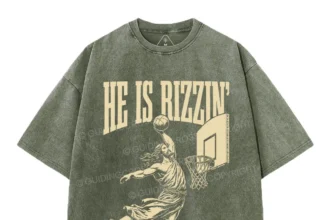The Story Behind the Name and the Iconic Jacket
In the 2014 war film Fury, the grim realities of World War II come to life through a gritty narrative, unforgettable performances, and symbolic wardrobe choices. One of the most talked-about pieces from the movie is the Norman Ellison Jacket worn by Logan Lerman’s character. This distinctive WW2 military outerwear, with its authentic WWII aesthetic, has become iconic not just because of its style but because of what it represents: youth, vulnerability, and transformation amidst war. But beyond costumes and characters, there’s a deeper question that often surfaces — why is the film called Fury? To answer that, we need to dive into the symbolic layers, historical relevance, and narrative significance that make Fury more than just a title — it’s a powerful statement of the film’s core.
The Meaning Behind “Fury”
At first glance, the word Fury evokes images of rage, violence, and uncontrollable emotion — all of which are prevalent themes in a film centred on the brutality of war. However, Fury is not just a metaphor; it’s the name of the Sherman tank operated by the five-man crew led by Sergeant Don “Wardaddy” Collier (played by Brad Pitt). The tank’s name, boldly painted on its gun barrel, represents more than a war machine — it symbolises strength, survival, and the boiling emotions simmering inside each soldier. Naming a tank Fury humanises it, giving it a character of its own. It becomes a sixth member of the team, sharing in their victories, losses, and traumas. In military history, it was common for soldiers to name their tanks, planes, or rifles. These names were often expressions of hope, defiance, or dark humour — a psychological mechanism to cope with the horrors of war. So in this case, Fury captures not just the steel and firepower of the tank but the emotional intensity carried by the men inside it.
A Psychological Reflection of War
The title also functions as a thematic anchor. Fury isn’t just about the firepower of the tank or the rage of war itself; it’s about the transformation of each character through extreme circumstances. For instance, Logan Lerman’s Norman starts as a timid clerk typist who’s never seen battle. Throughout the film, he’s thrust into hellish conditions and forced to confront violence head-on. His character arc — symbolised visually by his rugged green military jacket — is a descent into fury, both externally and internally. The crew members of Fury embody different facets of wartime psychology: stoicism, nihilism, camaraderie, and inner turmoil. Whether it’s Shia LaBeouf’s religiously devout “Bible” or Jon Bernthal’s unpredictable “Coon-Ass,” every character is navigating his personal version of fury. These emotional battles are just as destructive as the war they’re fighting, and the film doesn’t shy away from portraying the psychological cost.
The Historical Context of the Name
Director David Ayer, known for his intense and raw storytelling, revealed that he named the tank Fury based on actual WWII tanks that bore similar names. This lends historical authenticity to the narrative. According to war records and veterans’ memoirs, many Sherman tanks were adorned with names like Thunderbolt, Reaper, Widowmaker, and yes — Fury. These names carried morale-boosting connotations and forged a bond between the crew and their tank. Moreover, “fury” aligns with the sheer desperation of the war’s final days. Set in April 1945, the film takes place during Nazi Germany’s collapse. Allied forces were pushing deeper into enemy territory, and the violence was escalating. For the men inside Fury, the name was both a battle cry and a curse — they were caught in the storm, trying to survive one last mission.
Symbolism Behind the Tank
Throughout the film, the tank Fury is depicted as more than a machine; it is a fortress, a coffin, a home, and ultimately, a grave. Its name underscores the emotional chaos experienced by its crew. When the final showdown comes — an intense last stand against an overwhelming German force — the tank becomes a crucible, testing every limit of human endurance. Naming the film Fury was a deliberate choice to convey that this isn’t just a story about a group of soldiers; it’s about the internalized wrath that war breeds. Rage against the enemy, against fate, and sometimes even against themselves. The tank becomes a visual and symbolic centerpiece of this emotion — carrying the scars of every battle, just like the men within.
Costumes and Their Psychological Weight
Wardrobe plays a powerful role in shaping the film’s tone and character development. The Logan Lerman Green Jacket is one of the film’s most standout elements, not for being flashy, but for being authentic. As Norman evolves from innocence to experience, his jacket — once crisp and clean — grows dirtier, more tattered, and war-worn, paralleling his descent into psychological chaos. Wardrobe choices in Fury are not mere background details; they reflect the mental states and histories of the characters. Brad Pitt’s character, for instance, wears a leather coat that has clearly seen battle. It’s not just a piece of clothing; it’s a visual narrative of his experiences. One could argue that each man’s costume is an extension of their trauma — like armour built from past battles.
A Legacy of Grit
The Brad Pitt jacket from Fury — especially the leather jacket, the combat boots, and the grit-covered face — has become a visual representation of battlefield realism. Pitt’s portrayal of Sergeant Collier is built on authenticity, and his costume reinforces that. Everything he wears looks used, lived-in, and earned through survival. That realism extends beyond the screen, making the costume a favourite for military enthusiasts, film collectors, and cosplay communities. This gritty outfit not only enhanced the immersion of the film but also solidified Brad Pitt’s character as one of the most memorable WWII roles in recent cinema. His costume bridges history and storytelling, becoming a reference point for discussions about leadership, sacrifice, and psychological burden in times of war.
A Word That Encapsulates It All
Because the film isn’t just about tanks and tactics. It’s about raw, unfiltered emotion — the kind that war stirs up in the hearts of ordinary men. It’s about the rage of losing comrades, the fury of fighting an unwinnable battle, and the inner storms that brew when morality is tested by survival. The title is brutally simple, yet profoundly fitting. Fury as a name captures the story’s essence in one powerful word. It embodies the film’s action, its emotional core, its historical authenticity, and its deeply human characters. Whether it’s the tank tearing through enemy lines or the symbolic jacket worn by a young soldier forced to grow up too fast, every frame of the film is drenched in fury — controlled, suppressed, and finally, unleashed.
Conclusion
Ultimately, Fury is more than just the name of a tank or a war film — it is the mood of the story, the identity of its characters, and the emotional firepower behind every bullet fired and every tear shed. From Logan Lerman’s journey, symbolised by his green jacket to the iconic Brad Pitt costume, every element ties back to the central idea: war is fury. And Fury is war.

















